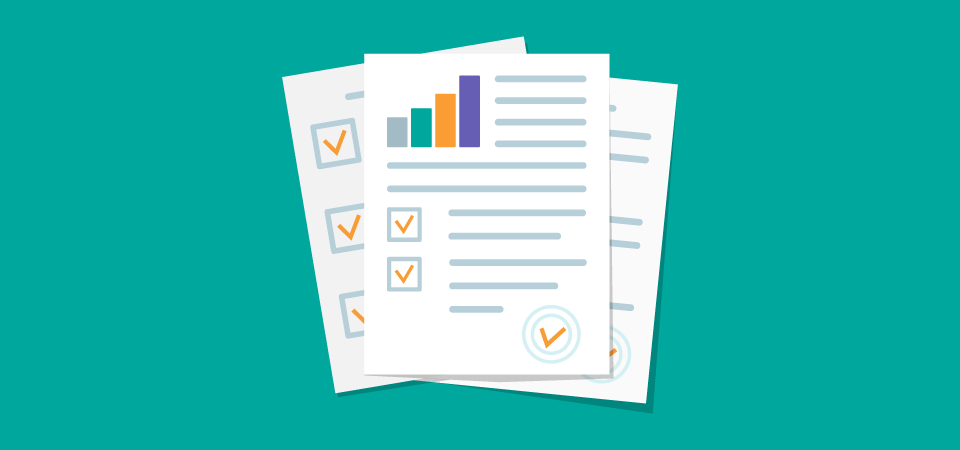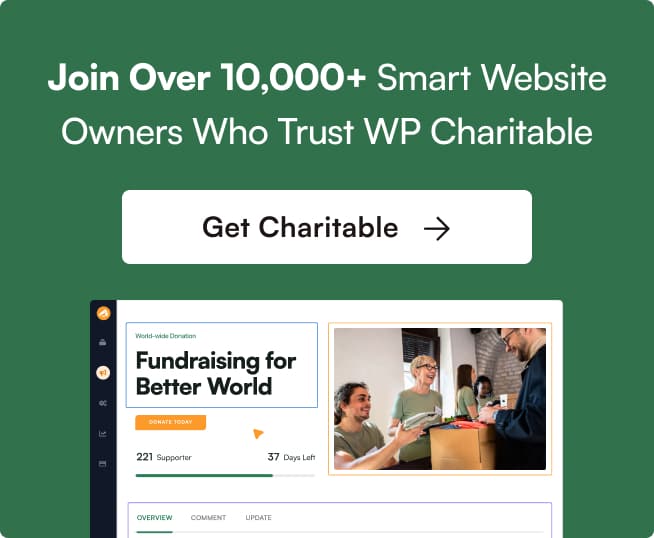When donors entrust your nonprofit organisation with their hard-earned money, they want to be assured that their donations are being put to good use. Rather than feeling like their funds have “disappeared into a black hole”, you can reassure donors that their contributions are making a real, meaningful difference by producing donor reports for your organisation.
To learn what donor impact reports are and what a high-quality report should contain, read our complete guide to donor impact reports below.
We’ll discuss how often you should issue a donor impact report, how to maintain transparency and accountability with your organisation’s best contributors and the best way to disseminate your donor reports for maximum impact.
Let’s begin!
What is a donor impact report?
A donor impact report is a document or summary page produced by nonprofit organisations thanking their contributors and explaining how their donations were used to further the organisation’s goals and objectives.
Some donor reports such as this one from The Campaign for INSEAD are published on a public webpage, allowing their donors to see where funds were distributed in the last year quickly.
They included some relevant and exciting donor information, such as:
- The total amount of gifts and pledges
- Record amount collected in a single giving day
- Number of donors who contributed over a certain amount
- The largest gift ever received from donors
- Pie charts and bar graphs showing gift allocations, their percentage splits, and the amount of annual gifts and donations received in the last five years
To make your donor impact report engaging and interactive for your readers, consider following INSEAD’s example and including a wide variety of exciting information and visually represented data.
While publishing your donation report on a dedicated webpage is one option, you can also create a document such as a PDF that your donors can open and view.
The UN Refugee Agency (UNHCR) did exactly this, where they published a 16-page donor impact report as an easily-accessible document on their website.
Their report contains a yearly overview of where contributions went month-by-month and includes sections with visualised data that allows readers to understand the impact of their contributions quickly.
As long as your nonprofit organisation clearly outlines where your donor’s financial contributions went, how they were allocated, and the impact they made on your goal and vision, you’ll build a closer relationship with your donors and promote accountability and transparency.
How often should you issue donor reports?
Depending on the scale and pace of your organisation, you may want to consider issuing donor reports either quarterly or yearly.
Quarterly reports will allow you to keep in touch with your donors more frequently, letting them stay in the loop and understand exactly where their funds are going.
Annual reports are great for summarising large amounts of donations over time and usually contain a significant amount of information and detail.
It’s up to your organisation to determine whether a quarterly or annual report satisfies your donors the most.
Asking your donors about the frequency of reporting they prefer will help you make the correct decision and ensure everyone’s thoughts and viewpoints are heard and understood.
Why issue donor impact reports?
Organisations issue donor reports to tell their generous contributors exactly how their donations are used, which goes a long way towards donor retention and plays an important role in donor management.
If someone is dedicated and committed to your nonprofit’s cause, they want to know how their funds are allowing your organisation’s vision to take shape.
If you don’t frequently share the positive impact you’re able to make because of your donors, they won’t feel as connected to your organisation, and in turn, may be less likely to contribute in the future.
Donor reports are all about connecting with your most loyal contributors and showing them that their funds make a tremendous difference.
Transparency and accountability
When contributing to your organisation, your donors want to know they can trust you to use their funds in ways that further your goals and vision.
Donor reports promote transparency and accountability by revealing the numbers to all of your contributors. Once they see that you’re open about your fund disbursements and use them in ways they appreciate and support, your donor’s trust in your nonprofit will grow and flourish.
Share the impact donors contribute to
Donors want to see how their funds and contributions actively make a difference in the world.
If your organisation doesn’t show them, who will?
Only you can encourage and empower your donors by showing them all the incredible ways their funds are being used.
Maintain donor engagement
Nonprofits must consistently maintain and grow their relationships with their most loyal and generous donors.
This can be accomplished by maintaining a regular stream of communication, informing them of any big events or changes, and showing them how they’re making a difference through your donor reports.
What should your donor reports contain?
If your organisation wants to compile a high-quality donor impact report, there are several key elements that you should include.
At a high level, the goal of your donor impact report is to:
- Thank your donors and show appreciation for their giving and generosity
- Show them exactly where their funds were dispersed and how they were used
- Illustrate the impact their funds made by displaying pictures, videos, and sharing positive stories about your initiatives
Donor impact report outline
Using examples from professionally published donor impact reports, such as those from INSEAD and the UNHCR, we can pull out several common elements included in each of these donor reports.
- Introduction – Thank your donors and include a short message or blurb about your appreciation towards them.
- Who is in your nonprofit organisation’s leadership – Board members, employees?
- Yearly/Quarterly Overview – Show your donors what you accomplished in the time period of your donor report. Be sure to include all of the details to make it more personal and relatable.
- Show the Numbers (Number of donors, donation amounts) – Share all of the financial details of your organisation’s fund disbursements and fundraising efforts. Talk about how much you raised in gifts and pledges, the largest gifts you’ve received, how many donors contributed, and any other relevant financial details your donors could appreciate.
For nonprofits using WordPress, Charitable provides a low-overhead way of collecting online donations. If your organisation wants to demonstrate how well you’re using donor funds, consider using Charitable in your next fundraising campaign. All plans are on a fixed annual fee basis, with no transaction fees! - Visualise the Data – Using pie charts, bar graphs, or any other visual medium, show your donors how their funds were allocated, what they were used for, and perhaps how your donations have been growing over the last several years.
- List Top Donors – Create a list containing all of your major donors and their information.
- Revenues and Expenditures – When it comes to communicating with your most loyal donors, they want to see no stone unturned. If your organisation has had several large expenses, share what they were used for. If you’ve improved anything or performed any upgrades, don’t hold back on the rationale that prompted your actions and all of the future benefits they’ll provide.
- Share Impact Stories & Testimonials from Beneficiaries – Collect personal stories, interviews, and conversations with the individuals your organisation has been able to impact due to your donor’s generosity. Share these stories with your donors directly, and allow them to see the true impact of their contributions.
- Give them the opportunity to donate again – At the end of your donor report, encourage your donors to give once more and continue making an impact in partnership with your organisation. Include a call-to-action (CTA) that allows them to easily donate.
By including these elements in your donor impact reports, you can ensure you’re providing high-quality reports that your generous donors appreciate and inspire them to continue giving to your organisation.
Disseminating your donor reports
There are many ways to distribute your donor impact reports among your contributors, allowing them to read and view your report across multiple channels.
The most common way to share your donor report is to publish a copy on your website and include prominent links to your donor report from adjacent pages.
If you have an email list of your current donors, send an email blast with your donor impact report. If anyone misses the report on your website, they’ll be able to view it from their email inbox quickly.
Distribute your report among your organisation’s social media channels. Make several posts promoting your donation report and telling your followers how and where they can read it.
Using common distribution channels like your nonprofit’s website, an email list, and social media, you can ensure your donor impact report gets into the hands of as many people as possible.
Donor impact report best practices
To get the most out of your donor impact report, there are a few “best practices” you should follow when putting your reports together.
For maximum engagement and impact, make sure your organisation:
- Doesn’t skimp on design and formatting. A report that’s hard to read or isn’t visually appealing and be a turn-off for potential readers and donors.
- Includes all relevant numbers and data points. Even though it takes time to track down all of your financial data and the precise numbers regarding everything your organisation did, your donors will appreciate the effort and trust your organisation more.
- Encourages your donors to contribute further. By including a call to action within your donor impact report, you’ll allow your most loyal donors to contribute further.
Use Charitable to boost your online fundraising efforts
Donor impact reports are an essential tool for maintaining good relations with your existing donors and attracting donations from new and repeat donors alike.
Charitable is a great way to boost your fundraising efforts if your nonprofit uses WordPress on your website.
Organisations that currently use Charitable’s Essentials and Growth plans have access to several online donation benefits, such as:
- Payment gateway compatibility (Accept credit cards, PayPal, Google Pay, Apple Pay, and more)
- Newsletter connect (Collect the emails of your most loyal donors to send them your impact reports and encourage future donations)
- Receive recurring donations (Let your donors set up recurring payments to contribute to your organisation continuously)
Charitable contains fundraising campaign reports and donation history reports, letting you quickly sort through the data and include relevant information into your donor impact reports.
If you’d like your nonprofit to start collecting more donations and making it easier to retrieve donation history for creating your impact reports, sign up for Charitable’s Essentials or Growth plans today.



Leave a Reply